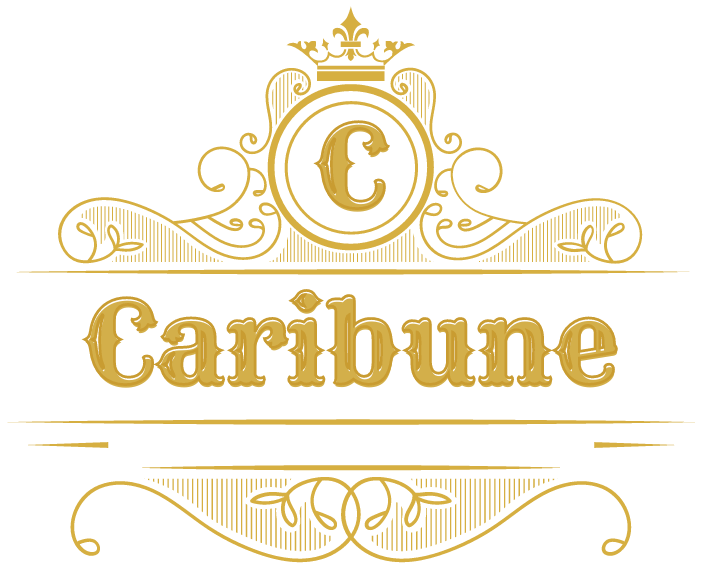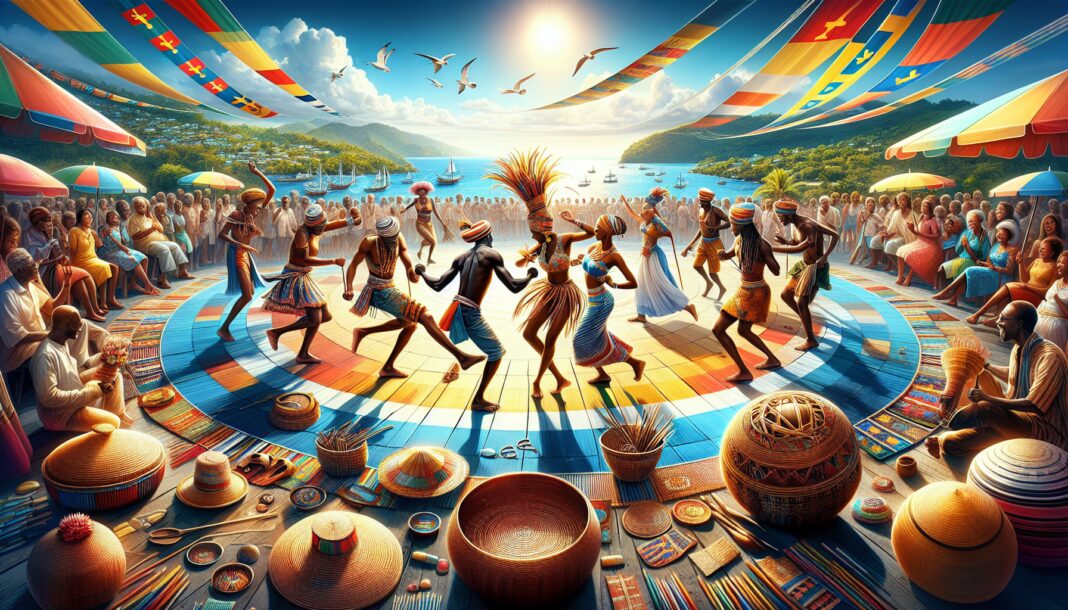Grenada culture history is a vivid tapestry woven with African, French, and British influences that create a unique and vibrant society. Known as the “Island of Spice,” Grenada’s rich cultural heritage includes diverse traditions, music, dance, and festivals, reflecting its historical journey.
This post delves into elements like Grenadian folklore, the impact of colonial eras, and how historical events have shaped the nation’s identity. Explore the intriguing blend of cultures that have made Grenada a fascinating convergence of history and modern-day vibrancy.
Discovering the Vibrant Culture of Grenada
Grenada is a Caribbean gem bursting with vibrant culture and traditions. Its cultural tapestry is woven with music, dance, food, and festivals that reflect the island’s rich heritage. Let’s dive into the elements that make Grenada’s culture so unique and captivating.
Traditional Music and Dance in Grenada
Grenada’s music and dance are the heartbeats of its cultural identity. The island’s traditional music scene is a lively blend of African, European, and indigenous influences. Calypso, reggae, and soca are the main genres that dominate the airwaves. Each genre tells stories of the island’s past, offering soulful rhythms and catchy melodies.
Dance in Grenada is an expression of joy and storytelling. The “Quadrille” dance, a remnant of colonial times, is performed with vibrant costumes and energetic movements. Another popular dance is the “Jab Jab,” typically seen during the island’s famous festivals. Dancers paint themselves in black oil or molasses, adorned with horns, to mimic traditional devil figures, creating a powerful and mesmerizing spectacle.
Festivals and Celebrations Unique to Grenada
Grenada’s calendar is dotted with colorful festivals and celebrations. The most prominent is the “Spice Mas” Carnival, held in August. This event is a vibrant explosion of music, dance, and parades. Participants don elaborate costumes, bringing the streets alive with color and sound. It’s a celebration of freedom and Grenadian identity.
Another notable event is the “Grenada Chocolate Festival,” celebrating the island’s rich tradition of cocoa production. Visitors can indulge in chocolate tastings, workshops, and tours of cocoa plantations. The “Carriacou Parang Festival” is another unique celebration, focusing on traditional Christmas music with a Caribbean twist.
Grenadian Cuisine: A Culinary Journey
Grenadian cuisine is a delightful culinary journey reflecting the island’s diverse cultural influences. Known as the “Spice Isle,” Grenada’s dishes are infused with fragrant spices like nutmeg, cinnamon, and cloves. “Oil Down,” the national dish, is a must-try. It’s a hearty one-pot meal made with salted meat, vegetables, and spices simmered to perfection in coconut milk.
Street food is also an integral part of Grenadian culture. Visitors can savor local delights like “roti,” “pelau,” and “corn soup.” Each dish tells a story of the island’s history and the creativity of its people. Grenadian cuisine is not just about flavors; it’s about experiencing the island’s spirit through food.
Exploring Grenada’s Rich History
Grenada’s history is as rich as its landscapes, shaped by colonization, indigenous influences, and the journey to independence. Let’s explore the historical chapters that have defined this island nation.
Colonial Influence and Historical Landmarks
Grenada’s colonial history is marked by European powers competing for control. The French and British left a significant imprint on the island, evident in its architecture and historical landmarks. Fort George, a prominent structure overlooking St. George’s, offers not only stunning views but also stories from the colonial era.
Another landmark, Fort Frederick, is known for its backward-facing cannons, a strategic defense against internal threats. The island’s colonial past is also reflected in the charming town of St. George’s, with its colorful Georgian buildings and narrow streets.
Grenada’s Independence Journey
Grenada’s path to independence was a tumultuous yet inspiring journey. The island gained full independence from British rule on February 7, 1974. This significant event is celebrated annually as “Independence Day,” marked by parades, cultural performances, and a reflection on national pride.
The journey to self-governance was marked by political struggles and social change. Maurice Bishop, a pivotal figure, led a revolutionary government that sought to transform Grenada. Though his tenure was cut short, Bishop’s influence remains a vital part of Grenada’s history.
The Role of the Indigenous Carib People
Long before European colonization, the indigenous Carib people called Grenada home. Their influence is still evident in the island’s culture and traditions. The Caribs were skilled navigators and farmers, known for their crafts and knowledge of natural medicines.
Despite the challenges faced during colonial times, the Carib legacy endures. Their contributions to Grenada’s culture are celebrated through storytelling, art, and preservation of historical sites. Understanding the Caribs’ role offers a deeper appreciation of Grenada’s rich and diverse history.
Grenada’s Art and Handicrafts
Art and handicrafts in Grenada are a testament to the island’s creativity and cultural heritage. From traditional crafts to contemporary art, Grenada’s artistic landscape is thriving and constantly evolving.
The Evolution of Grenadian Art
Grenadian art has evolved over centuries, reflecting the island’s varied influences. Early art forms were primarily functional, focusing on pottery and weaving. Over time, Grenadian art expanded to include painting, sculpture, and mixed media. Artists draw inspiration from the island’s landscapes, traditions, and social issues.
Contemporary Grenadian artists are gaining recognition for their innovative techniques and distinctive styles. Art galleries and exhibitions showcase the dynamic range of Grenadian art, offering a glimpse into the island’s artistic soul.
Craftsmanship and Local Handicrafts
Grenada’s craftsmanship is renowned for its quality and uniqueness. Local artisans create beautiful handicrafts using traditional methods passed down through generations. Baskets, mats, and hats woven from local fibers are popular souvenirs.
The island’s spice industry also inspires crafts, with nutmeg-themed items such as jewelry and candles. These handicrafts are not only decorative but also a representation of Grenadian culture and heritage. Visitors can explore craft markets and workshops to witness artisans at work, creating pieces that reflect the island’s essence.
Prominent Artists and Their Contributions
Grenada is home to many talented artists who have made significant contributions to the art world. Artists like Asher Mains and Susan Mains are celebrated for their thought-provoking works that explore identity and culture. Their pieces often feature vibrant colors and themes that resonate with the Grenadian experience.
The contributions of these artists extend beyond the canvas. They actively engage in community projects and mentorship programs, nurturing the next generation of Grenadian artists. Through their work, they not only promote Grenada’s art scene but also preserve its cultural heritage for future generations.
Grenada’s vibrant culture, rich history, and flourishing art scene make it a captivating destination for travelers. Whether exploring the island’s music, festivals, historical sites, or art, visitors are sure to be enchanted by Grenada’s unique and dynamic spirit.
Conclusion
Grenada’s vibrant culture is a tapestry of lively music, spirited dance, and unforgettable festivals that breathe life into the island. Each beat, step, and celebration tells a story, weaving together the past and present in a rich cultural mosaic. The island’s culinary scene is a flavorful journey, offering dishes that pay homage to its diverse heritage. Every meal is a celebration of Grenada’s history, blending spices and flavors that reflect the influence of colonial times and the enduring spirit of the indigenous Carib people.
The evolution of Grenada’s art scene is a testament to its creativity and resilience. Local craftsmanship shines through in every piece, showcasing the unique talent of Grenadian artists. These creations are not just art; they are expressions of the nation’s soul, capturing the essence of its identity. From vibrant paintings to intricate handicrafts, each work reflects a deep connection to the island’s roots.
Grenada invites you to immerse yourself in its culture, taste its diverse cuisine, and experience its artistic expressions. This island is more than a destination; it’s a community with a heartbeat, inviting you to explore and appreciate every facet of its identity. Let Grenada’s culture inspire and connect with you, leaving lasting memories etched in your heart.
FAQ
What are the key historical landmarks to visit in Grenada?
Grenada boasts several historical landmarks. Fort George in St. George’s offers panoramic views and a deep dive into the island’s military history. Belmont Estate showcases Grenada’s colonial past with its plantation heritage. The Grenada National Museum provides insights into the island’s rich history, featuring exhibits on the indigenous Amerindians, the slave trade, and more.
How does Grenada’s history influence its current cultural practices?
Grenada’s history deeply influences its cultural practices, blending African, French, and British traditions. This mix reflects in local music, dance, and food. African roots manifest in drum rhythms and dance forms, while French and British influences shine through traditional celebrations and cuisine.
What traditional festivals in Grenada showcase its rich culture?
Grenada’s culture comes alive in festivals like Spicemas, the island’s unique version of Carnival, renowned for vibrant parades and music. The Carriacou Maroon & String Band Music Festival showcases African heritage through traditional music and dance. These celebrations highlight the island’s diverse and vibrant culture.
How has the colonial past shaped Grenada’s diverse cultural heritage?
The colonial era left an indelible mark on Grenada’s cultural tapestry. British and French influences merge with African traditions, forming a diverse heritage. This blend appears in local dialects, culinary dishes, and architectural styles, creating a unique Caribbean identity.
What makes Grenada’s heritage sites unique in the Caribbean?
Grenada’s heritage sites stand out due to their rich historical layers and well-preserved state. Sites like Fort Matthew and River Antoine Rum Distillery offer unique glimpses into the past. The island’s ability to intertwine natural beauty with historical significance makes these sites exceptional.
How can visitors experience authentic Grenadian culture and history?
Visitors can immerse themselves in Grenadian culture by exploring local markets, visiting historical sites, and engaging with community events. Participating in cooking classes to learn about traditional dishes or joining guided tours of plantations and forts offers deeper insights into the island’s rich history and vibrant culture.

